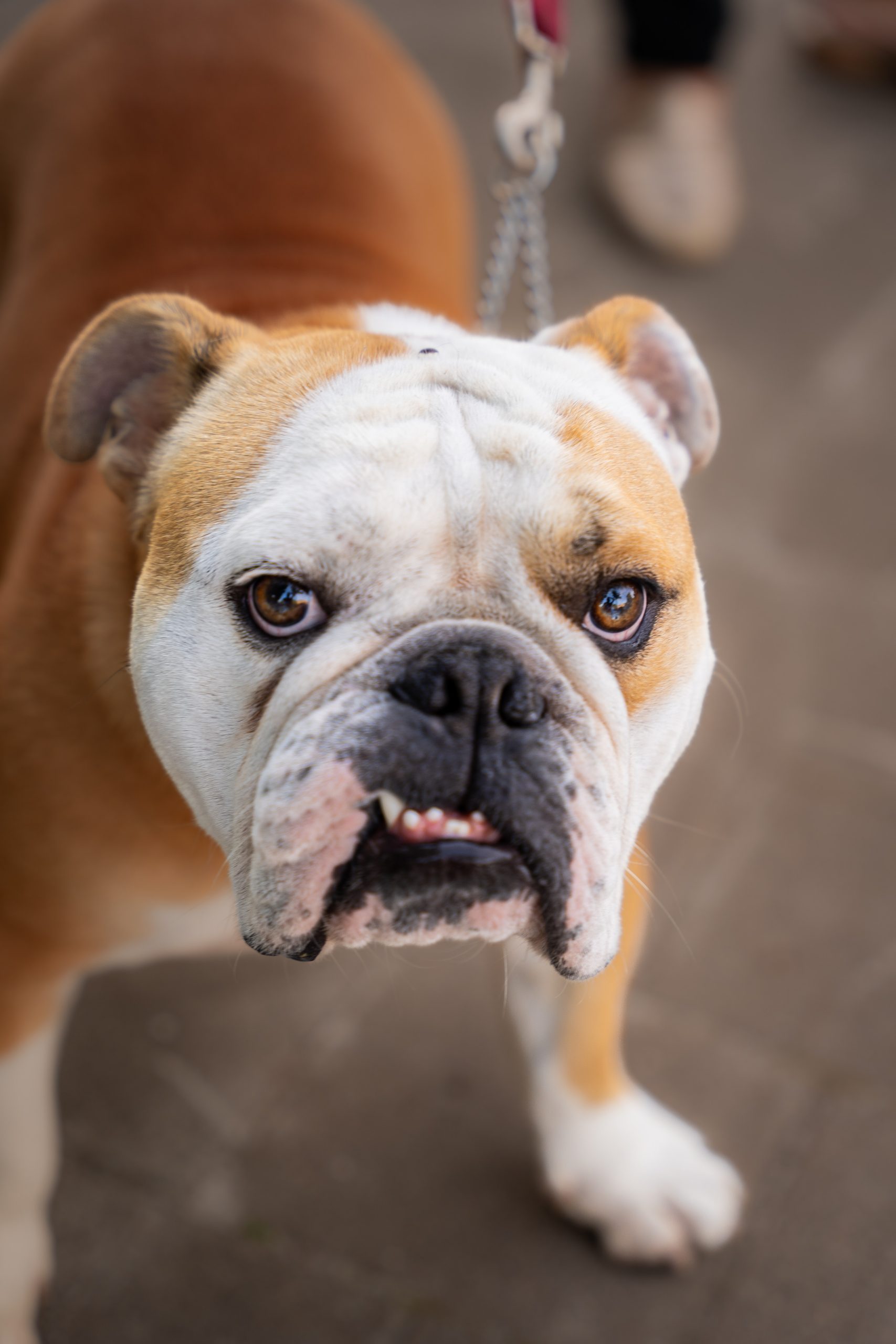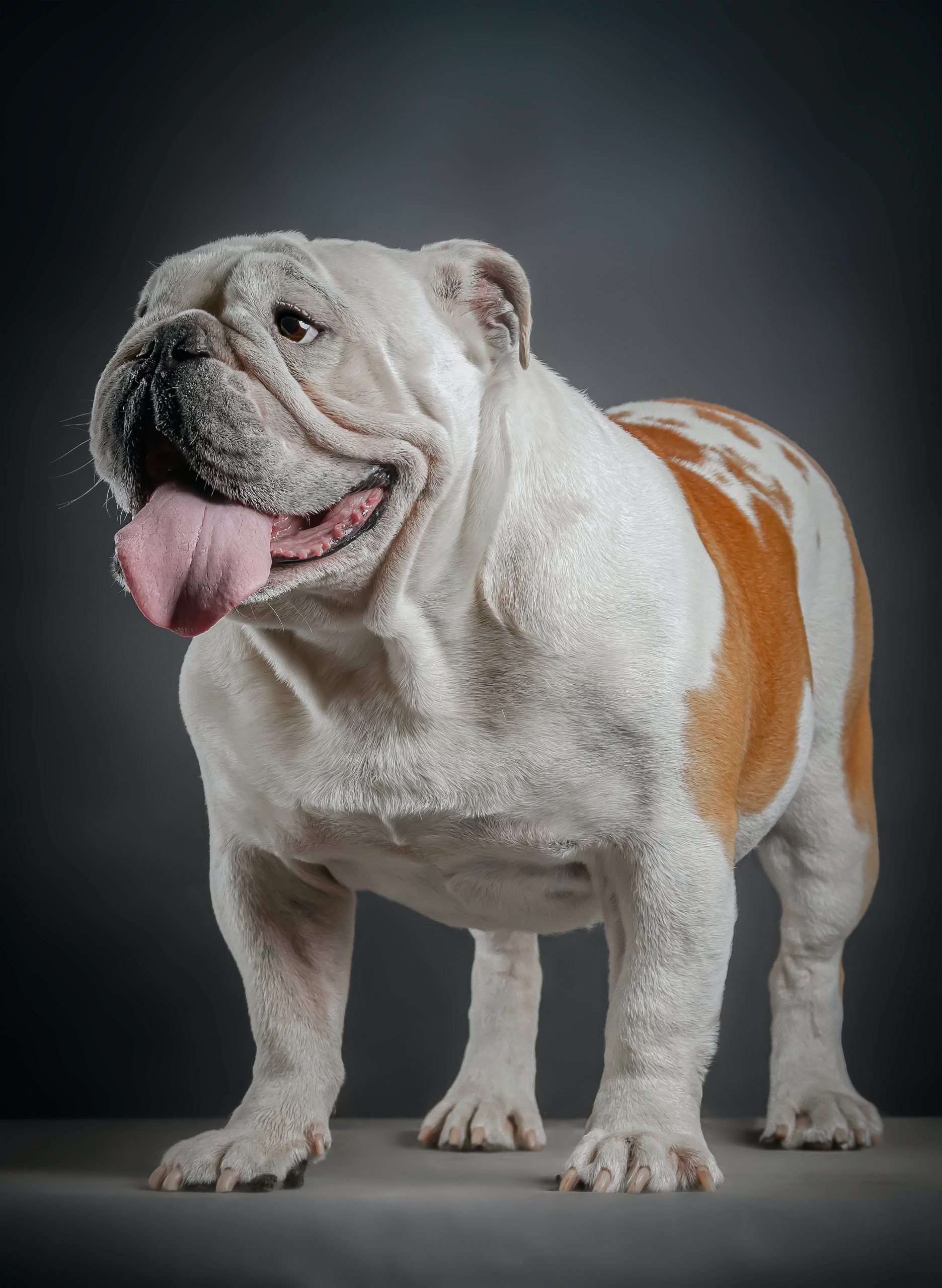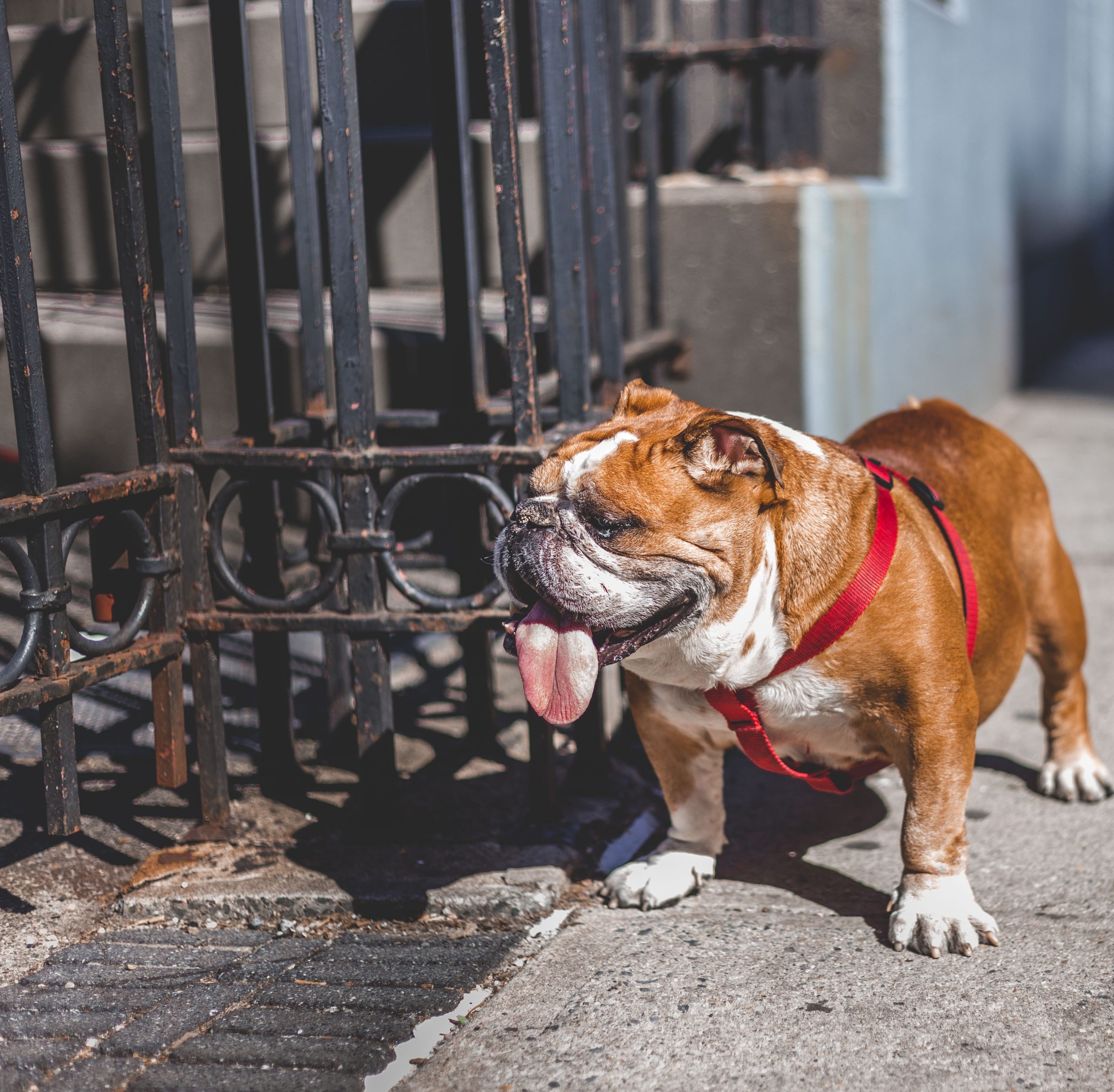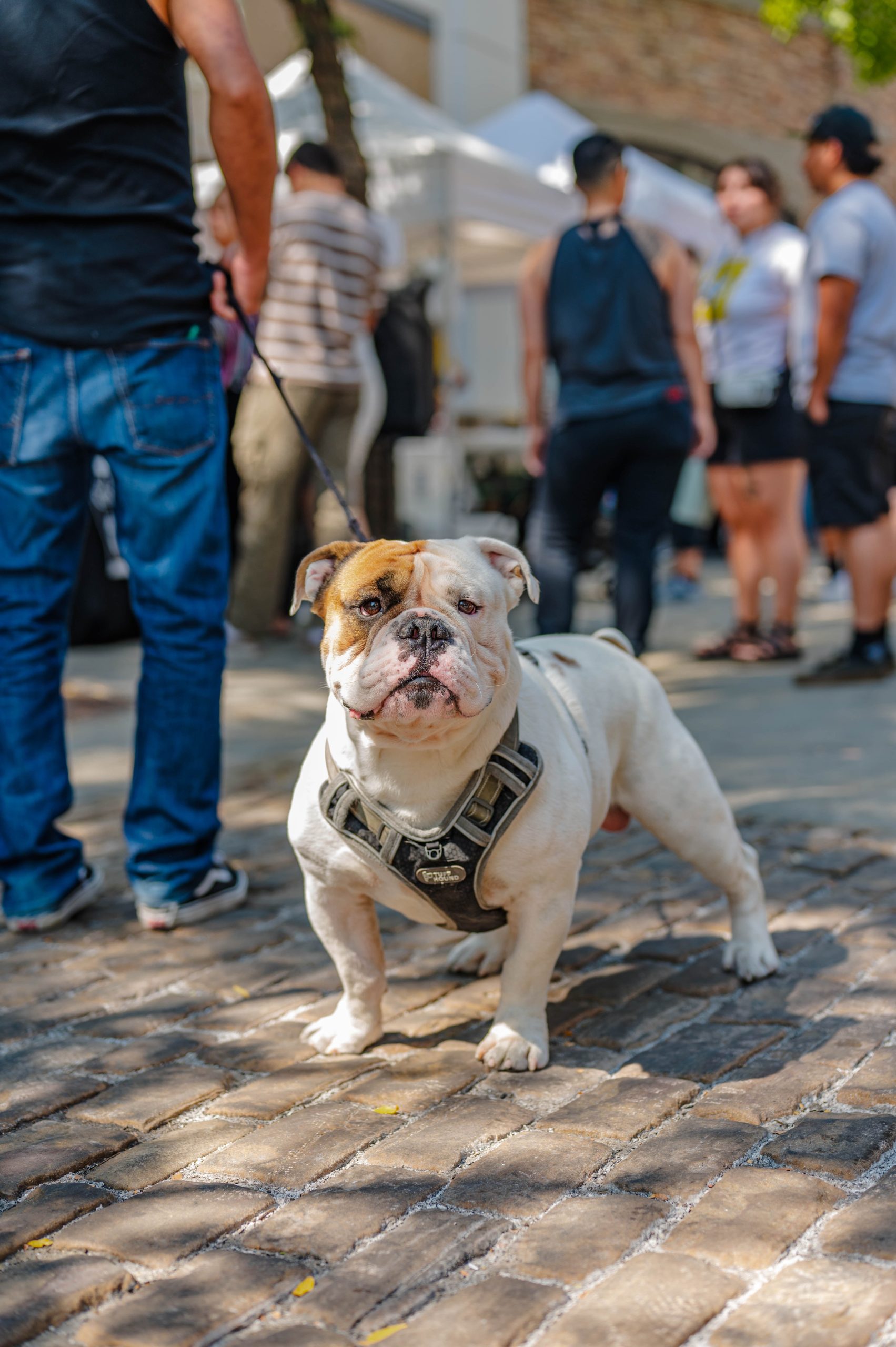Bulldogs are thought to have been developed in 13th-century England, under King John, for the “sport” of bullbaiting, in which a staked bull battled a pack of dogs while onlookers placed bets on the outcome. The dogs used in this gruesome sport, the forerunners of the modern Bulldog, were vicious brutes with enormous jaws, incredibly fearless, and seemingly painless.
Bulldog history underwent a sea change in 1835 when England outlawed using animals in blood sports. Bullbaiting gave birth to underground pit-dog fighting, and blood sports actually went underground. The plodding Bulldogs of the early 19th century were insufficient for this illegal activity; faster, more energetic canines were needed. By combining several terrier breeds with Bulldogs, gamblers produced their ferocious, four-legged gladiators. As a result, the Bull Terrier, Staffordshire Bull Terrier, and another bull-type terrier breed that is still in fashion today were developed as early prototypes. The Bulldog faced extinction because bullbaiting was no longer used. As a result, bulldog fans started the drawn-out process of changing the breed’s reputation from brawler to friend. They improved the Bulldog’s physical features to make it more appealing, they subdued its ferocity, and they reimagined the breed as a kind and affectionate pet that is especially good with kids.
England’s national animal is the bulldog and has been for a very long time. The similarities between the jowly, stubborn Bulldog and the jowly, tenacious Prime Minister Winston Churchill were frequently noted during World War II. The breed serves as the mascot for numerous sports teams in America, especially those that represent Yale University. Handsome Dan, the Bulldog mascot for Yale, is thought to have been the first animal mascot in sports history. Uga, who cheers on the University of Georgia Bulldogs from the comfort of an air-conditioned doghouse on the sidelines, is another well-known Bulldog football mascot. The Bulldog also serves as the aging face of the United States and Mack Truck. Corps of Marines.







 Health
Health Grooming
Grooming Exercise
Exercise Training
Training Nutrition
Nutrition